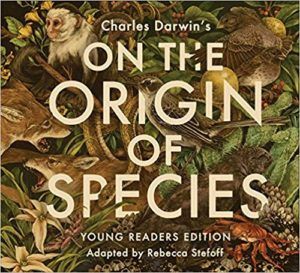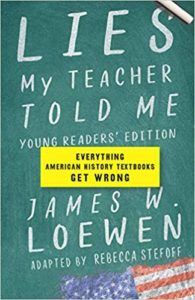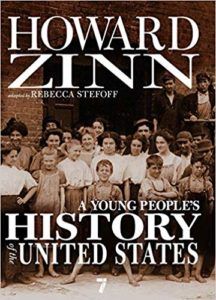
Adapting Adult Books for Young Readers
Adaptations for young readers are somewhat of a recent phenomenon, but they have been making waves in the book industry. After all, you would be hard-pressed to find a topic that causes as much pearl-clutching as what children are reading. It falls under the larger issue of what kind of media children and teenagers are exposed to, and what this exposure means for their mental development. We want kids to challenge themselves, and we want to protect them from the tough concepts that sometimes we maybe wish we could forget about, if only for a little while. At the same time, there are tons of arguments about reading levels and what kinds of books should even be available to kids. Book banning reached such a high pitch that we now have Banned Books Week to raise awareness about the issue.
Adapting books for young readers can mean a variety of different things. It can mean adding pictures, changing slurs to slightly less harsh words, or cutting out passages that may seem a little boring to young readers. There are many great books adapted for young readers that come out of this process, and it is a helpful way to introduce kids to new historical and contemporary figures that don’t have as many books for all reading levels as, for example, Abraham Lincoln.
The continuing trend of adapting books for young readers from the big publishing houses as well as small demonstrates a commitment to widening the boundaries of educational reading that is available for classrooms and libraries alike. Being able to choose a book with a picture or drawing on the front that looks like yourself is still a privilege, and should not be taken for granted.
For this article, I spoke to Brandy Colbert, c0-author of the young reader’s adaptation of Life in Motion by Misty Copeland, and Rebecca Stefoff, author of countless works of adapted nonfiction for young readers.
 How to Adapt
How to Adapt
For young readers, Scholastic releases a yearly Reading Report to take the temperature of how young people are engaging with literature, stories, reading role models, and the social component of reading. Their most recent report reflected a continued hunger for diversity and stories that reflect kids’ lived reality. Brandy Colbert, who co-authored the adaptation of Misty Copeland’s memoir Life in Motion, sees this as a deeply important issue in getting kids to keep reading.
For Colbert, it wasn’t necessarily about breaking apart the story to make it more palatable for young readers—she just helped suggest some strategic cuts during the process of outlining the adaptation. If you were to read the books side by side, you may notice the exclusion of a certain part about Misty Copeland acquiring birth control pills. It’s not that middle grade readers (the book is targeted to grades 4–7) couldn’t understand this issue, but it’s a little boring for a young person to read about the specific mechanics outlined in the original edition.
Thinking about the biographies that were in my classroom and on the shelf in my bedroom, there were the usual suspects for civil rights—Rosa Parks and Martin Luther King Jr. We learned about historical people of color, but didn’t often delve into what strides were being made in the contemporary moment. Introducing Misty Copeland to young readers is just as important as historical figures since she was a huge trailblazer in her field. (In fact, she was recently honored with the Trailblazer Award at the Congressional Black Caucus’s “Celebration of the Arts” event.)
Widening the historical figures available to younger readers is extremely important for keeping kids invested in reading. If young kids of color only get to read one or two books about important historical artists, activists, and trailblazers of color, they may lose interest in reading altogether. Reading helps building empathy, but we also crave seeing ourselves in what we read. Adaptations like Life in Motion provide an entryway for kids outside of an imagined norm to see themselves history and the contemporary moment.
 What to Leave Out
What to Leave Out
Five years ago, The New York Times released an article with the somewhat patronizing title, “To Lure Young Readers, Nonfiction Writers Sanitize and Simplify.” This article lays out a more prosaic argument about how writers take out more unsavory parts of stories, framed around Laura Hillenbrand’s adaptation of her award-winning work Unbroken. It focuses more on the tide of nonfiction for young readers that was upcoming 2014 (when the article was written), and why it has become a trend. After talking to some writers working in this field and reading more about it, I think this article title is a bit misleading. It focuses more on the idea that every book must be treated as sacrosanct, as opposed to approaching the idea of reading and knowledge-gathering for kids as a holistic, ever-changing process.
As Brandy Colbert said in our interview, “it’s really about accessibility.” The way she sees these kinds of adaptations is “getting to the point a little bit faster in a way that encourages young people to keep reading.” Accessibility is the key word here—the books need to be deemed appropriate to be in classrooms. The pearl-clutching over curses and “adult” themes in books continues in school districts and libraries, so it’s necessary to take a book like Life in Motion and make sure kids could dive into at least a small part of it.
In a similar fashion, Rebecca Stefoff is deeply invested in adapting high quality nonfiction for young readers. I spoke with her about her work in this field, as she is one of the standout authors with her adaptations of On the Origin of Species by Charles Darwin, Lies My Teacher Told Me: Everything American History Textbooks Get Wrong by James Loewen, and A People’s History of the United States by Howard Zinn.
 There are different approaches to adapting these different genres for young readers. For her adaptation of On the Origin of Species, Stefoff mostly cut down the more repetitive parts and included more explanations in the side matter. Her major desire was to introduce kids to the beauty of Darwin’s prose. In fact, reading her adaptation of On the Origin of Species is a much more direct way to get through the book because she cut the parts that are repetitive for the sake of convincing the public that, at the time, was almost unconvinceable.
There are different approaches to adapting these different genres for young readers. For her adaptation of On the Origin of Species, Stefoff mostly cut down the more repetitive parts and included more explanations in the side matter. Her major desire was to introduce kids to the beauty of Darwin’s prose. In fact, reading her adaptation of On the Origin of Species is a much more direct way to get through the book because she cut the parts that are repetitive for the sake of convincing the public that, at the time, was almost unconvinceable.
 On the other hand, a book like Lies My Teacher Told Me allows kids to dive into Loewen’s argument about reading carefully and with a healthy dose of skepticism and curiosity. The original book takes 12 textbooks and points out the bits of history conveniently missing from these textbooks. Rebecca Stefoff wanted to make sure all kids got a chance to engage with that kind of intellectual rigor. As she said in our interview, “history is not math.” Kids getting a chance to read this book earlier than the typical reading level would give them the chance to develop critical skills of looking at various sources and understanding how to interpret them.
On the other hand, a book like Lies My Teacher Told Me allows kids to dive into Loewen’s argument about reading carefully and with a healthy dose of skepticism and curiosity. The original book takes 12 textbooks and points out the bits of history conveniently missing from these textbooks. Rebecca Stefoff wanted to make sure all kids got a chance to engage with that kind of intellectual rigor. As she said in our interview, “history is not math.” Kids getting a chance to read this book earlier than the typical reading level would give them the chance to develop critical skills of looking at various sources and understanding how to interpret them.
 Another technique Stefoff uses a kid’s perspective to illuminate the narrative. For example, in her version of A Young People’s History of the United States, she wrote sidebars in kids’ voices who would be involved in the events she was elucidating from Zinn’s work. She doesn’t invent anyone wholecloth, but there are normally kids involved in some capacity.
Another technique Stefoff uses a kid’s perspective to illuminate the narrative. For example, in her version of A Young People’s History of the United States, she wrote sidebars in kids’ voices who would be involved in the events she was elucidating from Zinn’s work. She doesn’t invent anyone wholecloth, but there are normally kids involved in some capacity.
Nonfiction that centers a kid’s perspective is a successful approach as well. It sets up more opportunities for understanding the place of children in other times and societies, and allows them to build empathy. This method recalls the enduring popularity of the American Girls books (if you are an elder millennial like I am).
How They Help
Widening the choices of reading and allowing kids to indulge in historical comparison themselves is always a good idea. No matter how worried us adults will get about kids reading, they can and will read more than us, if given the opportunity. Adaptations of nonfiction about difficult topics are practical as well: they can avoid the issue of books being banned for bad or offensive language, which is very common. When a book is deemed age inappropriate, it gets taken away from a kid’s possible reading list. Giving them at least a partial version is preferable, as long as books keep getting banned and censored.
Hopefully, these nonfiction adaptations could lead to more diverse nonfiction and biographies written for kids. I would hope there could be as many biographies for all ages about Bayard Rustin, Florynce Kennedy, Lyda Conley, Tammy Duckworth, Marsha P. Johnson, and an ever-expanding list of people as there are about George Washington.













